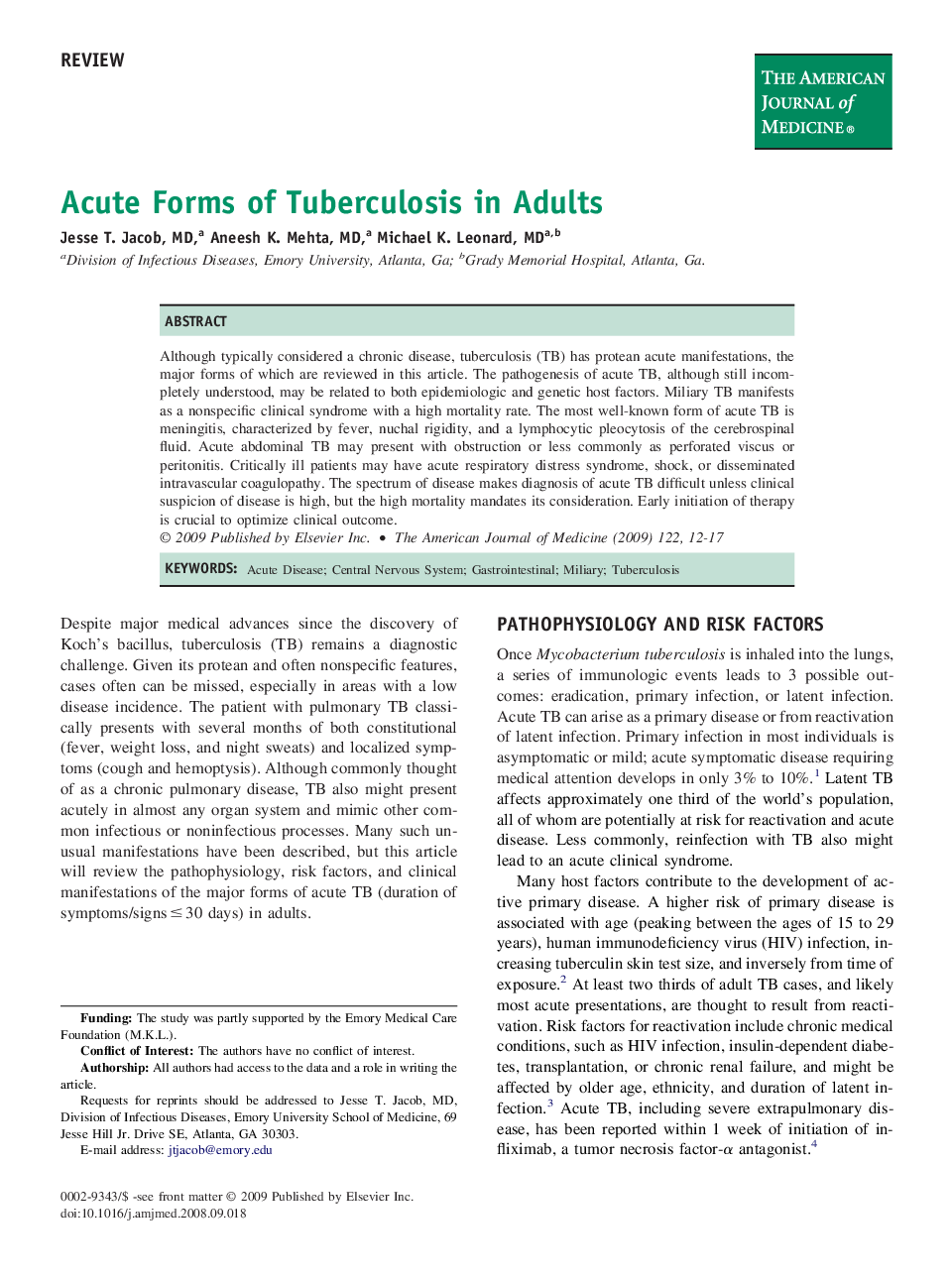| Article ID | Journal | Published Year | Pages | File Type |
|---|---|---|---|---|
| 2720425 | The American Journal of Medicine | 2009 | 6 Pages |
Although typically considered a chronic disease, tuberculosis (TB) has protean acute manifestations, the major forms of which are reviewed in this article. The pathogenesis of acute TB, although still incompletely understood, may be related to both epidemiologic and genetic host factors. Miliary TB manifests as a nonspecific clinical syndrome with a high mortality rate. The most well-known form of acute TB is meningitis, characterized by fever, nuchal rigidity, and a lymphocytic pleocytosis of the cerebrospinal fluid. Acute abdominal TB may present with obstruction or less commonly as perforated viscus or peritonitis. Critically ill patients may have acute respiratory distress syndrome, shock, or disseminated intravascular coagulopathy. The spectrum of disease makes diagnosis of acute TB difficult unless clinical suspicion of disease is high, but the high mortality mandates its consideration. Early initiation of therapy is crucial to optimize clinical outcome.
